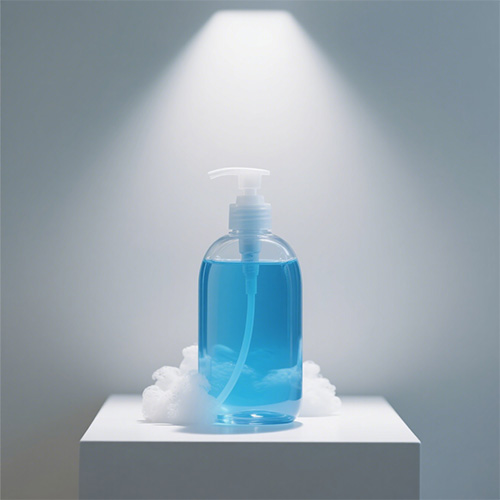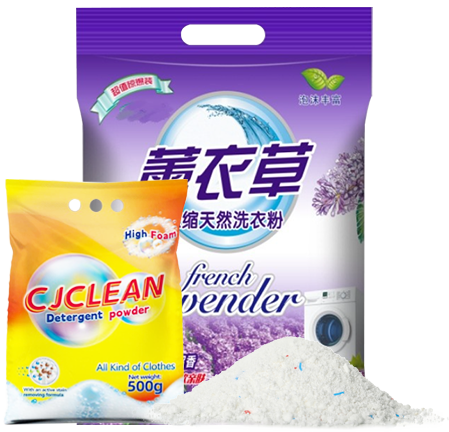Welcome to My Blog!
Before we dive into the content, I’d love for you to join me on my social media platforms where I share more insights, engage with the community, and post updates. Here’s how you can connect with me:
Facebook:https://www.facebook.com/profile.php?id=61573740643310
Now, let’s get started on our journey together. I hope you find the content here insightful, engaging, and valuable.
Table of Contents
Introduction
Are you tired of messy countertops, leaky containers, and the constant struggle to squeeze just the right amount of product out of a bottle? If so, you are not alone. In today’s fast-paced world, from luxurious shampoos to powerful cleaning products, efficiency and convenience are paramount. The right packaging is critical to ensuring a clean, controlled and satisfying user experience.
This blog post will delve into the world of squeeze bottles, focusing on their versatility, benefits and why they have become an integral part of modern life, especially in the world of household chemicals. We’ll explore how these simple yet ingenious containers can solve common dispensing challenges and help you maintain a cleaner, more organized and efficient lifestyle.
Shenlong Packaging has more than two decades of experience in packaging solutions and manufacturing of daily chemical products. From color-printed packaging to blow molding, injection molding and daily chemical product manufacturing, whether for private label or OEM production, we understand the critical role that well-designed packaging plays. We can customize product solutions to meet your needs, and our expertise in manufacturing high-quality extruded plastic bottles for household products is one example of our commitment to innovative and functional packaging.

The Evolution of Convenience: Why Choose Squeeze Plastic Bottles for Daily Chemicals?
The journey from traditional rigid containers to the ubiquitous squeeze plastic bottles we see today in our bathrooms and utility closets has been driven by a relentless pursuit of convenience, hygiene, and waste reduction. Early forms of packaging for daily chemical products often led to spills, product waste, and difficult, often unhygienic, dispensing. The introduction of flexible plastic materials revolutionized this, paving the way for containers that could be easily compressed to dispense their contents with precision.
Unpacking the Benefits for Daily Chemical Products
Squeeze plastic bottles offer a multitude of advantages that contribute to their widespread popularity across the daily chemical product industry.
- Precision Dispensing for Daily Use: One of the most significant benefits is the ability to control the amount of product dispensed with precision. Whether you need a small dollop of hand soap, a measured amount of laundry detergent, or a precise application of hair conditioner, a gentle squeeze allows for accurate application, minimizing waste and mess. This is particularly crucial for concentrated or expensive daily chemical products.
- Reduced Product Waste: Unlike pumps or rigid containers where a significant amount of product can be left behind, squeeze plastic bottles allow users to access almost every last drop. Their flexible nature means you can flatten or roll them up as the contents diminish, ensuring maximum product utilization, which is economically beneficial for both manufacturers and consumers of daily chemical goods.
- Enhanced Hygiene and Cleanliness: With traditional jars, dipping fingers or utensils can introduce contaminants. Squeeze plastic bottles offer a more hygienic solution for personal care products like lotions and creams, as the product is dispensed directly without external contact, reducing the risk of cross-contamination and keeping the product fresh for longer. This is also vital for household cleaners, preventing direct contact with potentially harsh chemicals.
- Portability and Travel-Friendliness: Their lightweight and often unbreakable nature make squeeze plastic bottles ideal for travel-sized toiletries like shampoo, conditioner, and hand sanitizer. You can easily tuck them into a bag without worrying about breakage, and many are designed with secure caps to prevent leaks, making them perfect companions for any trip.
- Versatility in Application: The design of squeeze plastic bottles can be tailored to a vast array of viscosities and product types found in the daily chemical sector. From thin liquids like toners and sanitizers to thicker creams, gels, shower gels, and even pastes like toothpaste, there’s a squeeze bottle design optimized for efficient dispensing. Different cap styles, such as disc tops, flip tops, and spouts, further enhance their versatility for various daily chemical applications.
- Cost-Effectiveness in Manufacturing: Manufacturing squeeze plastic bottles is often more cost-effective than producing glass or metal containers. This translates to lower production costs for businesses in the daily chemical industry and more affordable products for consumers.
- Safety in the Home Environment: Plastic is inherently safer than glass in many environments, as it won’t shatter into dangerous shards if dropped. This makes squeeze plastic bottles a preferred choice for products used in bathrooms, kitchens, and around children, where accidental drops are common.
Common Uses of Squeeze Plastic Bottles in Daily Chemicals
The applications of squeeze plastic bottles are incredibly diverse, spanning across numerous daily chemical product sectors:
- Health and Beauty: Shampoos, conditioners, lotions, shower gels, hand sanitizers, sunscreens, liquid soaps, facial cleansers, and hair styling gels are prime examples of personal care products that benefit from the convenient dispensing of squeeze plastic bottles.
- Household Products: Liquid laundry detergents, fabric softeners, dish soaps, cleaning solutions, multi-surface cleaners, bathroom cleaners, and pet care washes frequently come in squeeze plastic bottles due to their practical dispensing and safety.
- Other Daily Chemicals: Certain glues, craft paints, and even specialized automotive cleaning products designed for consumer use often utilize squeeze plastic bottles for controlled application.
Anatomy of a Squeeze Plastic Bottle: Design and Materials for Daily Chemical Packaging
The effectiveness of squeeze plastic bottles in the daily chemical industry lies in their thoughtful design and the properties of the materials used in their construction, which must withstand various chemical formulations.
Material Matters
The choice of plastic material is crucial and depends on the daily chemical product it will contain, regulatory requirements, and desired properties like flexibility, clarity, and barrier protection against degradation or interaction with the contents.
| Plastic Type | Key Properties | Common Applications in Daily Chemicals |
| HDPE | High density polyethylene. Excellent chemical resistance, durable, opaque/translucent, good stiffness. | Detergents, bleach, some shampoos, body washes, general household cleaners. |
| LDPE | Low density polyethylene. Very flexible, good clarity, good chemical resistance, squeezable. | Lotions, creams, hand soaps, some shampoos, personal care products, glues. |
| PP | Polypropylene. High melting point, good chemical resistance, stiff, good barrier. | Some shampoos, conditioners, body washes, thicker cream containers. |
| PET | Polyethylene terephthalate. Transparent, strong, good gas barrier. Often used for clarity, less for squeezability. | Clear liquid soaps, toners, mouthwashes (often with pump or mist sprayer). |
| PVC | Polyvinyl chloride. Versatile, good clarity, flexible, but environmental concerns limit use in some areas. | Less common for daily chemicals due to PVC-free trends, but historically used for some household cleaners. |
导出到 Google 表格
LDPE and HDPE are most commonly used for squeeze plastic bottles in the daily chemical sector due to their flexibility, excellent chemical compatibility with a wide range of formulations, and cost-effectiveness.
Cap and Dispensing Mechanisms for Daily Chemical Products
The cap is just as important as the bottle itself, dictating how the daily chemical product is dispensed and preventing leaks, which is critical for safety and user satisfaction.
- Disc Top Caps: Popular for lotions, creams, and gels, where a small disc is pressed to open a hole for dispensing. Ideal for controlled release of thicker personal care products.
- Flip Top Caps: Common for shampoos, conditioners, shower gels, and liquid soaps, where a hinged top flips open to reveal an orifice. Offers easy one-handed operation in the shower.
- Spout Caps: Ideal for precise application of concentrated cleaning solutions or glues, offering a narrow, controlled stream to target specific areas.
- No-Drip/Valve Caps: Designed to prevent messy drips after dispensing, often found on dish soap or laundry detergent bottles, ensuring cleanliness around the dispensing area.
- Child-Resistant Closures (CRCs): Crucial for many household cleaning products and certain personal care items, these caps are designed to prevent accidental opening by children, prioritizing safety.
- Tamper-Evident Seals: Many squeeze plastic bottles for daily chemicals incorporate features like induction seals or shrink bands to ensure product integrity and safety from tampering before purchase.
The combination of a well-chosen material and an appropriate dispensing cap ensures that squeeze plastic bottles perform optimally for their specific daily chemical application, providing convenience and minimizing waste and safety hazards.
Sustainable Squeeze: Environmental Considerations for Daily Chemical Packaging
As consumers and manufacturers alike become more environmentally conscious, the sustainability of packaging, including squeeze plastic bottles used for daily chemical products, has become a significant topic.
Recyclability and Beyond
Many squeeze plastic bottles made from HDPE and LDPE are widely recyclable in curbside programs. However, the actual recycling rates can vary by region and depend on consumer participation and local infrastructure.
- Post-Consumer Recycled (PCR) Content: A growing trend in the daily chemical industry is the incorporation of PCR plastics into new squeeze plastic bottles. This reduces the demand for virgin plastic, lowers the carbon footprint, and diverts waste from landfills, appealing to environmentally conscious consumers.
- Lightweighting: Designing bottles with thinner walls while maintaining structural integrity reduces the amount of plastic used per bottle, lowering the overall environmental footprint and transportation costs for manufacturers of daily chemical products.
- Bioplastics: Research and development into bioplastics derived from renewable resources (e.g., corn starch, sugarcane) offer another avenue for more sustainable squeeze plastic bottles, though their widespread adoption and recyclability still present challenges and require careful consideration for chemical compatibility.
- Concentrated Formulas and Refill Systems: Promoting concentrated daily chemical formulas in smaller squeeze plastic bottles, or encouraging consumers to refill their existing squeeze plastic bottles from larger bulk containers or refill stations, is a powerful way to reduce single-use plastic waste in the long term. This aligns with consumer demand for more sustainable options.
While plastics present environmental challenges, ongoing innovations in material science and packaging design are continuously working towards more sustainable solutions for squeeze plastic bottles in the daily chemical sector, ensuring functionality without compromising environmental responsibility.
Choosing the Right Squeeze Plastic Bottle for Your Daily Chemical Needs
Selecting the ideal squeeze plastic bottle for your daily chemical product requires careful consideration of several factors to ensure optimal performance, safety, and consumer satisfaction.


Key Considerations
- Product Viscosity and Formulation: Is your daily chemical product thin and free-flowing (like a toner or hand sanitizer), or thick and viscous (like a cream, gel, or laundry detergent)? This will profoundly influence the choice of plastic material (e.g., more flexible LDPE for thicker gels), bottle shape, and cap design to ensure easy and effective dispensing.
- Chemical Compatibility: This is paramount for daily chemical products. The plastic must be chemically compatible with the specific formulation to prevent degradation of the bottle, leaching of harmful substances into the product, or alteration of the product’s efficacy. Manufacturers like Shenlong Packaging can provide critical guidance on material selection to ensure stability and safety.
- Barrier Properties: Does your product need protection from oxygen, moisture, UV light, or scent loss? Certain plastics offer better barrier properties crucial for maintaining the integrity and shelf life of sensitive daily chemical formulations.
- Shelf Life Requirements: The packaging should help maintain the product’s stability and shelf life, preventing premature degradation.
- Brand Aesthetics and User Experience: The shape, color, and labeling of the squeeze plastic bottle contribute significantly to brand identity and consumer appeal on the shelf. Ergonomics are also vital for daily chemical products – the bottle should be easy to hold, squeeze, and open, even with wet hands in the shower or during cleaning tasks. Custom molding options allow for unique designs that enhance brand recognition.
- Dispensing Method and Safety: How do you want the daily chemical product to be dispensed? This will determine the most suitable cap type (e.g., flip-top for shower products, disc-top for lotions, child-resistant caps for hazardous cleaners). Safety features, particularly child-resistant closures, are non-negotiable for many household chemicals.
- Target Audience: Consider who will be using the product. Is it for children (requiring CRCs), the elderly (needing easy-open designs), or someone with limited dexterity?
- Regulatory Compliance: Ensure the squeeze plastic bottles comply with all relevant industry, safety, and environmental regulations for daily chemical products in your target markets.
- Cost-Effectiveness and Production Scalability: Balance the desired features and quality with your budget and production volume requirements.
By thoughtfully evaluating these aspects, you can confidently choose squeeze plastic bottles that not only meet your functional and safety requirements for daily chemical products but also enhance the user experience and align with your brand’s values and market positioning.
Conclusion
From basic daily personal care to household cleaning, the squeeze plastic bottle has revolutionized the way we dispense and consume a wide range of everyday chemicals. Its benefits of precision, hygiene, portability and waste reduction have become an integral part of modern life. As we continue to explore, carefully selected materials, innovative cap designs, and evolving sustainability concepts are making these unassuming containers even more efficient and environmentally friendly in the household chemical industry. For businesses and consumers alike, understanding the benefits and considerations of extruded plastic bottles can help make informed choices that improve convenience and safety.
If you’re looking for customized packaging solutions that stand out on the shelf, including high-quality extruded plastic bottles designed specifically for your daily chemical products, feel free to contact Shenlong Packaging. With more than 20 years of expertise in packaging and household product manufacturing, we are ready to provide you with personalized product solutions that will make your brand shine and your customers happy. Contact us today and let us help you say goodbye to clutter and provide the perfect packaging for your line of household products!
FAQ
Are squeeze plastic bottles safe for all types of daily chemical products?
Most squeeze plastic bottles are safe for a wide range of daily chemical products, but chemical compatibility is crucial. Different plastic types react differently with various chemicals (acids, alkalis, solvents, oils, fragrances). It’s essential to use bottles made from plastics (like HDPE, LDPE, PP) that are specifically tested and proven to be compatible with your product’s unique formulation to prevent degradation of the bottle or contamination of the contents. Reputable packaging manufacturers can advise on the best material.
Can squeeze plastic bottles handle highly viscous daily chemical products like thick conditioners or heavy-duty cleaners?
Yes, squeeze plastic bottles are excellent for highly viscous products. For very thick daily chemical products like concentrated gels or heavy creams, manufacturers often opt for softer, more flexible plastics like LDPE, and design bottles with larger dispensing orifices or specific cap mechanisms (like wide-mouth flip-tops or valve caps) to ensure easy and complete dispensing.
How do manufacturers ensure the consistent quality of squeeze plastic bottles for daily chemical products?
Quality assurance for squeeze plastic bottles involves several steps. This includes using high-grade, virgin or PCR-certified plastic resins, rigorous quality control during the blow molding or injection molding process (checking dimensions, wall thickness, seal integrity), leak testing, and visual inspections for defects. For daily chemical products, chemical compatibility testing is also vital to ensure the bottle won’t react negatively with the product over time.
Can I get custom-designed squeeze plastic bottles for my unique daily chemical product line?
Absolutely! Customization is a key advantage of working with experienced packaging manufacturers. You can specify unique bottle shapes, sizes, colors, and even incorporate branding elements like embossed logos or textures directly into the mold. Shenlong Packaging, with its comprehensive manufacturing capabilities from blow molding to injection molding and color printing, specializes in creating personalized product solutions, ensuring your squeeze plastic bottles perfectly reflect your brand identity and meet the specific needs of your daily chemical products.

